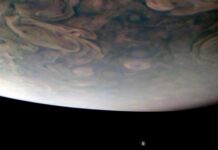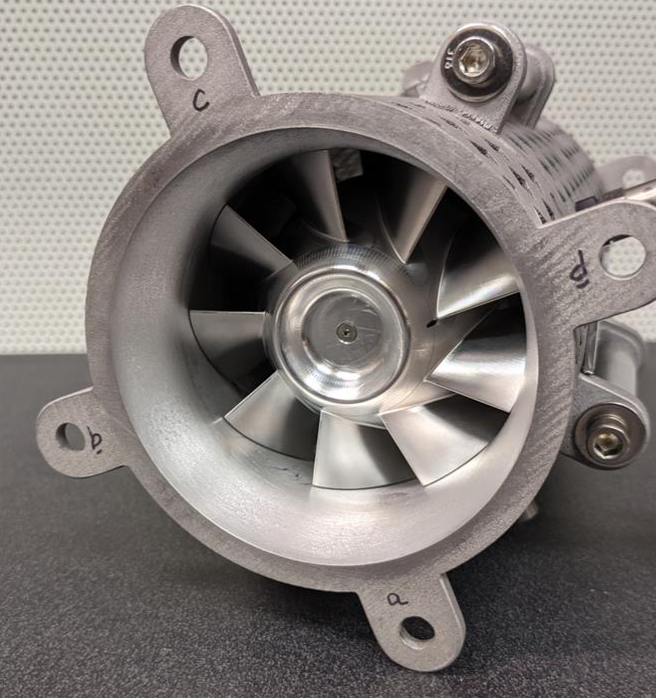NASA’s Quiet Space Fan: A Leap Towards Quieter Spacecraft Environments
NASA has recently made significant strides in enhancing the comfort and safety of onboard environments in space through the development of the Quiet Space Fan. This innovative technology is designed to significantly reduce noise levels inside crewed spacecraft, addressing a persistent issue that has been part of space travel since its inception. By sharing these findings and advancements with the commercial space industry, NASA aims to promote the adoption of this technology in future commercial space stations, thereby improving the quality of life for astronauts and potentially revolutionizing space travel.
The Importance of Noise Control in Space
Noise control within spacecraft is crucial for several reasons. Firstly, it enables effective communication between crew members, ensuring they can coordinate their tasks and respond to any emergencies without miscommunication. Secondly, reducing noise levels allows astronauts to hear alarms more clearly, which is essential for safety. Adequate noise management also contributes to better sleep quality, which is vital for maintaining the health and efficiency of space travelers. Excessive noise can also lead to hearing loss, so controlling it at the source is of utmost importance.
Origins of Spacecraft Noise
In spacecraft, noise primarily emanates from the Environmental Control and Life Support System (ECLSS) ventilation, as well as from equipment cooling fans. From the early days of human spaceflight, these systems have been a significant source of noise. Recognizing this, NASA has been working on designing highly efficient and quiet fans. These efforts build upon technology initially developed at NASA’s Glenn Research Center in Cleveland. By collaborating with companies developing new spacecraft and space stations, NASA is ensuring that quieter and more efficient designs can be implemented in future missions.
Collaborative Efforts with Industry
Angela Hart, manager of NASA’s Commercial Low Earth Orbit Development Program at the agency’s Johnson Space Center in Houston, emphasized NASA’s commitment to sharing technical expertise, technologies, and data with the industry. This collaboration is part of NASA’s broader strategy to support the development of multiple commercial space stations. The Quiet Space Fan research is a prime example of how NASA is actively working with private companies to foster the creation of future space destinations.
Evolution of the Quiet Space Fan
The initial prototype of the Quiet Space Fan was developed in 2009 at Glenn Research Center. The design utilized tools originally created for aircraft turbofan engines. Key parameters such as fan size, flow rate (the volume of air moved by the fan), and pressure rise (the increase in pressure across the fan) were modeled similarly to the original Orion cabin fan design specifications. This original design could move 150 cubic feet of air per minute and had a pressure rise of 3.64 inches of water column. Acoustic tests revealed that this new fan was approximately 10 decibels quieter than a commercial off-the-shelf fan of a similar size.
Recently, NASA took this research further by designing a larger fan that nearly doubles the flow rate and pressure rise capability, with the ability to move 250 cubic feet of air per minute and a pressure rise of 7 inches of water column. To put this in perspective, the original fan could provide enough airflow for a large car or van, while the new larger fan could service an entire house.
Benefits of the Quiet Space Fan Design
The design of NASA’s Quiet Space Fan aims to maintain high-performance standards while substantially decreasing ambient noise levels. Its application is envisioned on the International Space Station and future commercial space stations. According to Chris Allen, Acoustics Office manager at NASA Johnson, this advancement will lead to several significant benefits. These include volume and mass savings from noise controls that no longer need to be as large or may be unnecessary altogether, as well as reduced system pressure loss from mufflers and silencers that can be less restrictive. Additionally, the efficient fan design results in lower power consumption due to the reduced system pressure loss. Importantly, this technology helps meet spaceflight vehicle acoustic requirements, ensuring a safe and habitable acoustic environment for astronauts.
Impact on Human Spaceflight and Future Missions
Developing quieter fans is just one of the numerous initiatives NASA is undertaking to improve human spaceflight. These efforts are geared towards making space exploration more innovative and comfortable for future missions to low Earth orbit. By assisting private companies in offering reliable and safe services at a reduced cost, NASA can concentrate on its Artemis missions to the Moon. This focus allows the agency to continue leveraging low Earth orbit as a training and proving ground for deep space missions, ultimately advancing human exploration of the cosmos.
Conclusion
NASA’s Quiet Space Fan represents a significant advancement in the quest for quieter and more efficient spacecraft environments. By addressing the issue of noise at its source and collaborating with the commercial sector, NASA is setting the stage for a new era of space exploration that prioritizes both technological innovation and astronaut well-being. As this technology is adopted in future commercial space stations, it promises to enhance the overall experience of space travel, making it safer and more comfortable for those who venture beyond our planet.
For more information on NASA’s commercial space strategy, visit NASA’s official page on commercial space.
For more Information, Refer to this article.

































